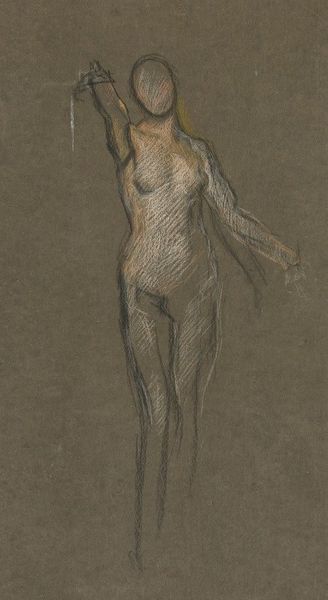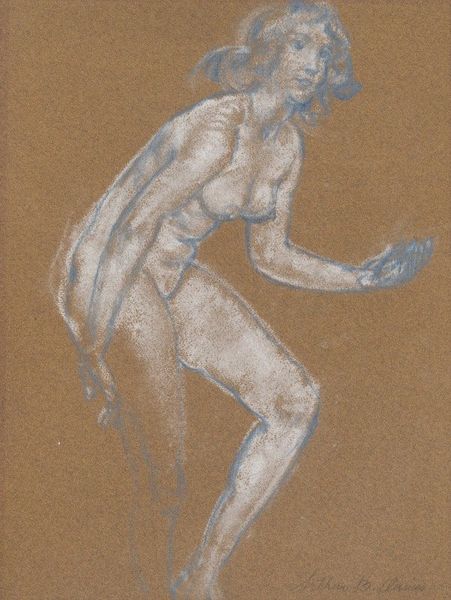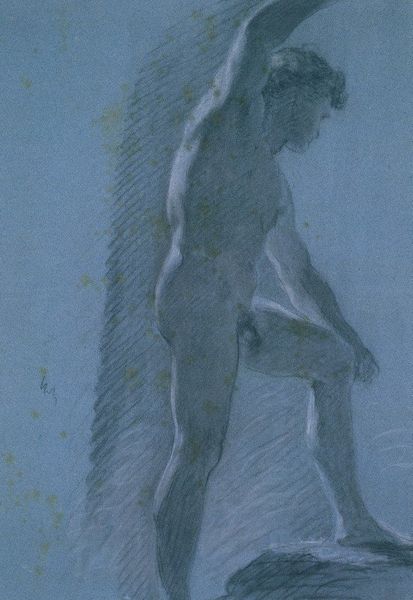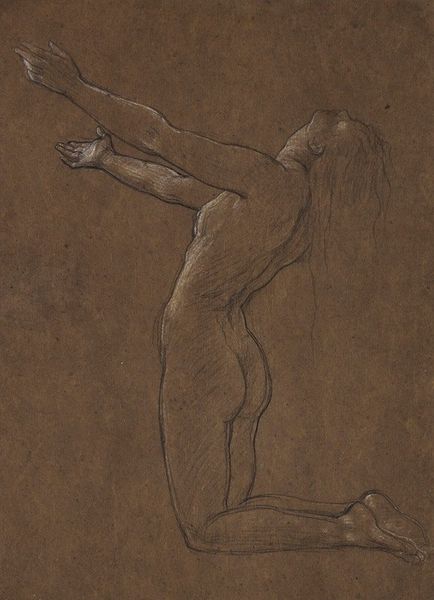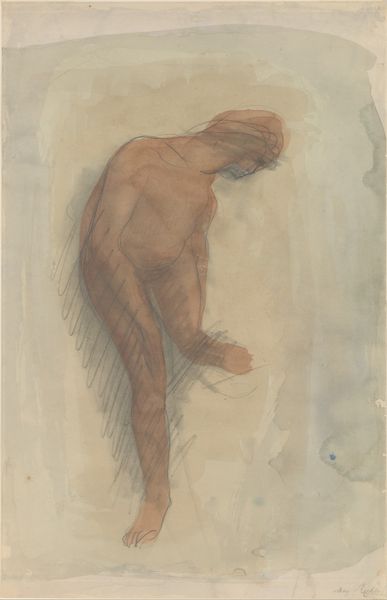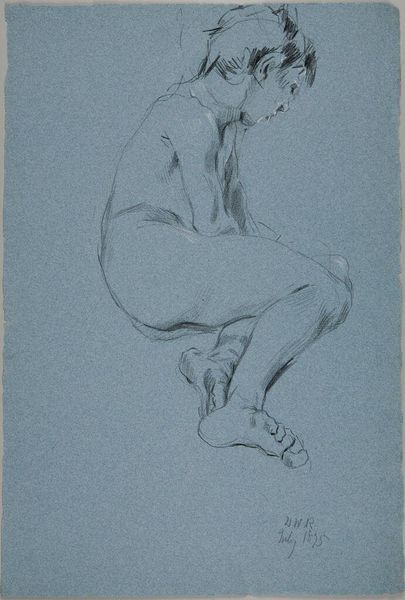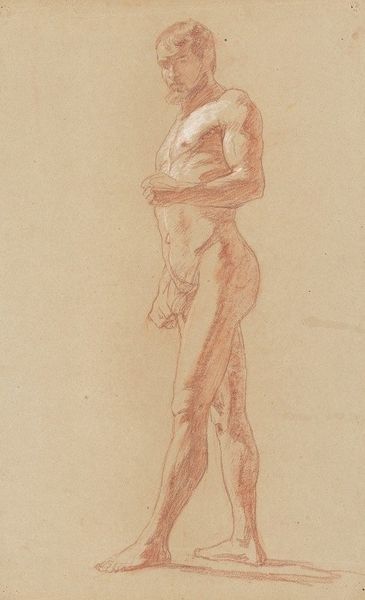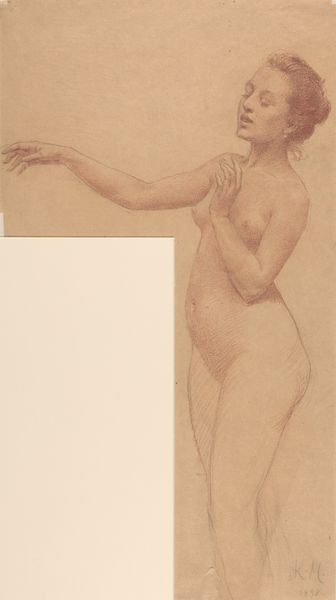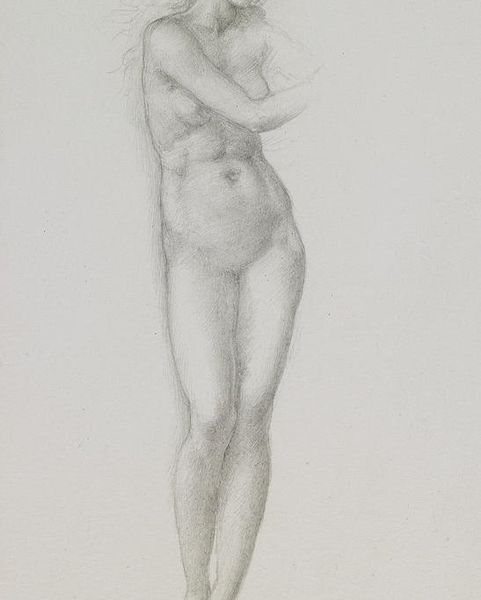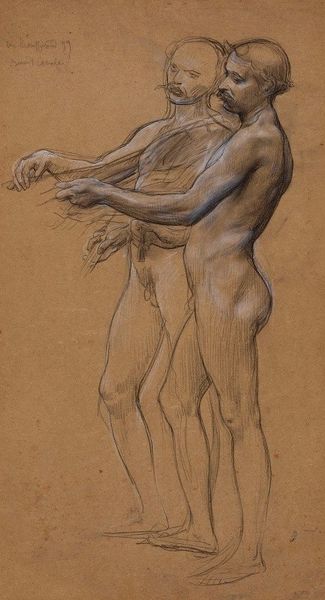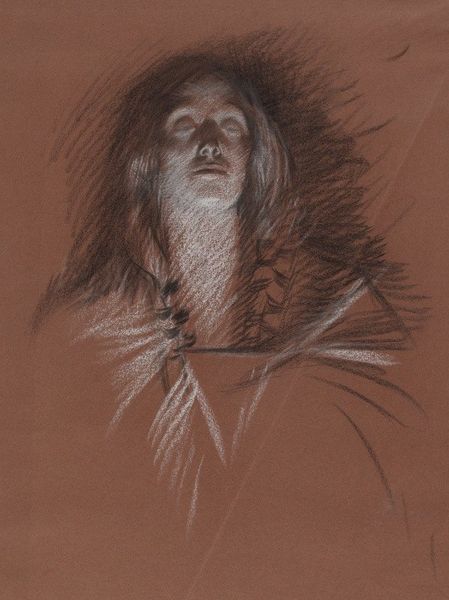
drawing, pencil
#
portrait
#
drawing
#
charcoal drawing
#
figuration
#
underpainting
#
pencil
#
symbolism
#
portrait drawing
Dimensions: 47.5 x 30.5 cm
Copyright: Public domain
Editor: This is "Personification of Pestilence," a pencil and charcoal drawing from 1912 by Adolf Hirémy-Hirschl. It’s incredibly unsettling; the figure’s faint smile is unnerving, almost mocking. What symbols or cultural memories do you see at play here? Curator: That smile is precisely where the power of the image lies. Pestilence isn't just a disease; it's a psychological plague. Consider the use of the female figure. Traditionally, women embody life and nurture, so what happens when this archetype is perverted into a symbol of death? Editor: So, it's a disruption of a fundamental symbol? A corruption? Curator: Exactly! Think about how plagues throughout history have challenged societal norms, turning life upside down. The image retains the form of something familiar—a woman—but the hollow expression warns of deeper chaos. Her outstretched hand implies reach, impact, both a gesture of giving and taking. Consider also the artist's choice of medium; pencil and charcoal give an unfinished feel, as if the destruction is incomplete and ongoing. Editor: That unfinished quality makes it feel more contemporary, even though it’s over a century old. Does the underpainting contribute to that? Curator: Absolutely. The underpainting creates a sense of something lurking beneath the surface, adding layers of symbolic meaning. What feelings arise as you consider that duality of surface and what remains hidden underneath? Editor: Definitely a sense of unease, that things are not always as they appear on the surface. The symbol of Pestilence seems both ancient and perpetually relevant. Curator: Yes. By understanding how these visual cues function, we can understand more deeply how powerful symbols can become in shaping our emotional and intellectual landscape.
Comments
No comments
Be the first to comment and join the conversation on the ultimate creative platform.
